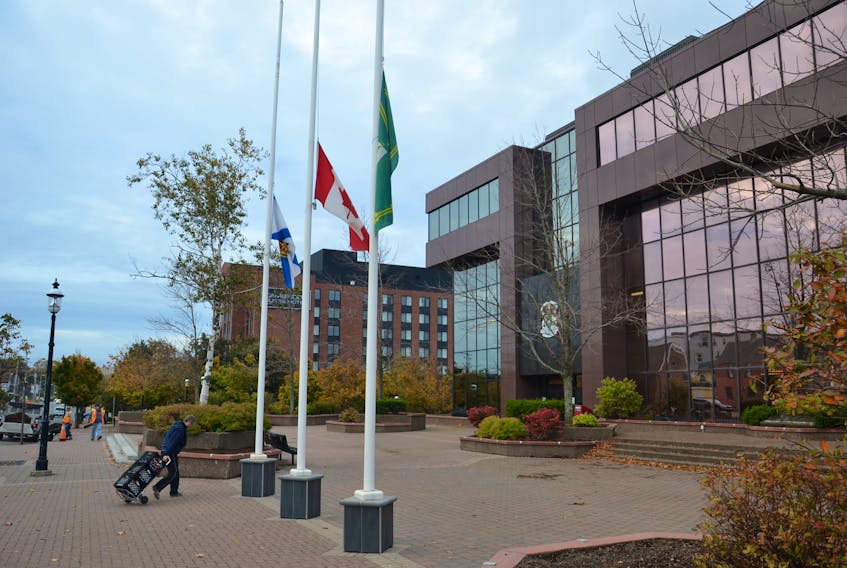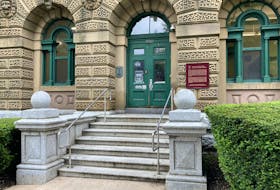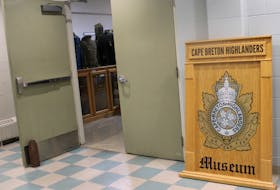SYDNEY, N.S. — The Cape Breton Regional Municipality’s ongoing population decline and its lack of commercial growth are continuing to be major factors as it begins the annual challenge of balancing its operating budget.
Chief financial officer Jennifer Campbell, who took over the position in August 2017, is tasked with putting together the budget that under the province’s Municipal Government Act (MGA) must be balanced.

Last year, CBRM council approved a $146 million operating budget for the 2018-2019 fiscal year.
This year, Campbell and her team are facing the same challenges that have plagued the municipality since its amalgamation in 1995. Simply put, the CBRM is short of cash and that, according to the CFO, makes providing services more and more difficult.
“There is a very nominal amount of discretionary spending in the operating budget which is why the balancing process is always so challenging,” said Campbell, who will oversee this week’s budget workshop during full-day meetings set for Wednesday and Thursday at city hall with members of the CBRM council.
The workshops that will focus on breaking down the municipality’s revenues and expenditures are expected to wrap up with a budget priority session. So far, several public consultation meetings have taken place across the municipality and the various CBRM departments are now preparing their proposed 2019-2020 budget documents
Campbell said that while CBRM revenues remain static, the municipality is continuing to see an increase in its expenditures, many of which she noted are not always obvious.
“We have extraordinary financial challenges every year that the public doesn’t always understand – we have collective agreements and we have binding arbitration, and those line items increase far more significantly than what our increase in taxation is as a result of the cost of living increases,” she said.
“We also have a flat commercial assessment base, we’re seeing a decline and we’re relying more on residential taxes now than we have ever been before – so, it’s really amazing how the departments have found efficiencies and cost-saving measures that the public doesn’t see there.”
BY THE NUMBERS
CBRM operating budget
- $146,860,803 –2018-2019 fiscal year
- Revenues
- $107,811,592 (73%) – CBRM tax revenues 2018-2019
- $15,335,838 (10%) – Provincial transfer/operating grant
Expenditures
- $45,577,826 (31%) – Engineering and Public Works
- $26,994,915 (18%) – Police services
- $19,274,044 (13%) – Provincial services
- $18,201,994 (12%) – Fire services
CBRM Population
- 94,290 – 2016 census
- 101,619 – 2011 census
- 102,250 - 2006 census
- 109,330 – 2001 census
- 117,849 – 1996 census
Veteran councillor Darren Bruckschwaiger believes the financial pressures are taking their toll on the municipality’s aging infrastructure. And, he attributes that to a lack of commercial and economic growth combined with the CBRM’s drastic population decline.
“When you lose these people it also means you are losing the associated taxes as well – we’re 30,000 people less than we were at amalgamation in 1995, we lost the people and the tax dollars, but we didn’t lose the miles of the road we have to maintain or the other services we have to provide,” said the District 10 councillor who represents Dominion and part of Glace Bay.

“It’s very tough to manage decline, especially when you take the coal and steel industries out of a community, and the fishery collapses — so, it is taking its toll, especially on our infrastructure, we may show off pretty good as far as running the operation, but at the end of the day it’s coming at the cost of our infrastructure.”
Back at the budget table, Campbell admitted that because of the area’s economic realities the CBRM goes about balancing its budget in the opposite way than other municipalities, most of which determine their budgetary needs and then tweak tax rates to match revenues with expenditures.
“We work backwards here — we determine how much revenue we have to pay for municipal services, and then we make our expenditures fit within that funding envelope,” said Campbell.
“And we’ve been doing that for a number of years, so we make do with the resources that we are able to generate in a given year which essentially depends on assessment growth or CPI for the CAP (Capped Assessment Program).”
But while CBRM staff and council may becoming more and more proficient in terms of balancing the budget, Bruckschwaiger goes so far as to suggest the process may someday be an exercise in futility, especially if an ongoing provincial study on the municipality’s viability validates his claims that the CBRM is becoming increasingly incapable of meeting its budgetary requirements.
“I know under the present circumstances that we are not viable and I’m confident that study will finally show the province that that is the case and hopefully then they’ll help this community more than they presently do,” said Bruckschwaiger, adding that he remains optimistic about the future despite the CBRM’s grim fiscal outlook.
“I don’t consider it all doom and gloom because people are more engaged now, we are blessed with people in our communities who volunteer for projects and I just keep hoping for things to happen.”
The major expenditures of the CBRM’s 2018-2019 budget were engineering and public works ($46 million); police services ($27 million); provincial services ($19 million); fire services ($18 million); and fiscal services such as debt repayment and bank charges ($12 million).
The municipality relies heavily on residential taxation which brings in approximately 73 per cent of its revenue. Tax rates in the CBRM continue to be among the highest in the province.
Related: CBRM council approves $147-million operating budget









